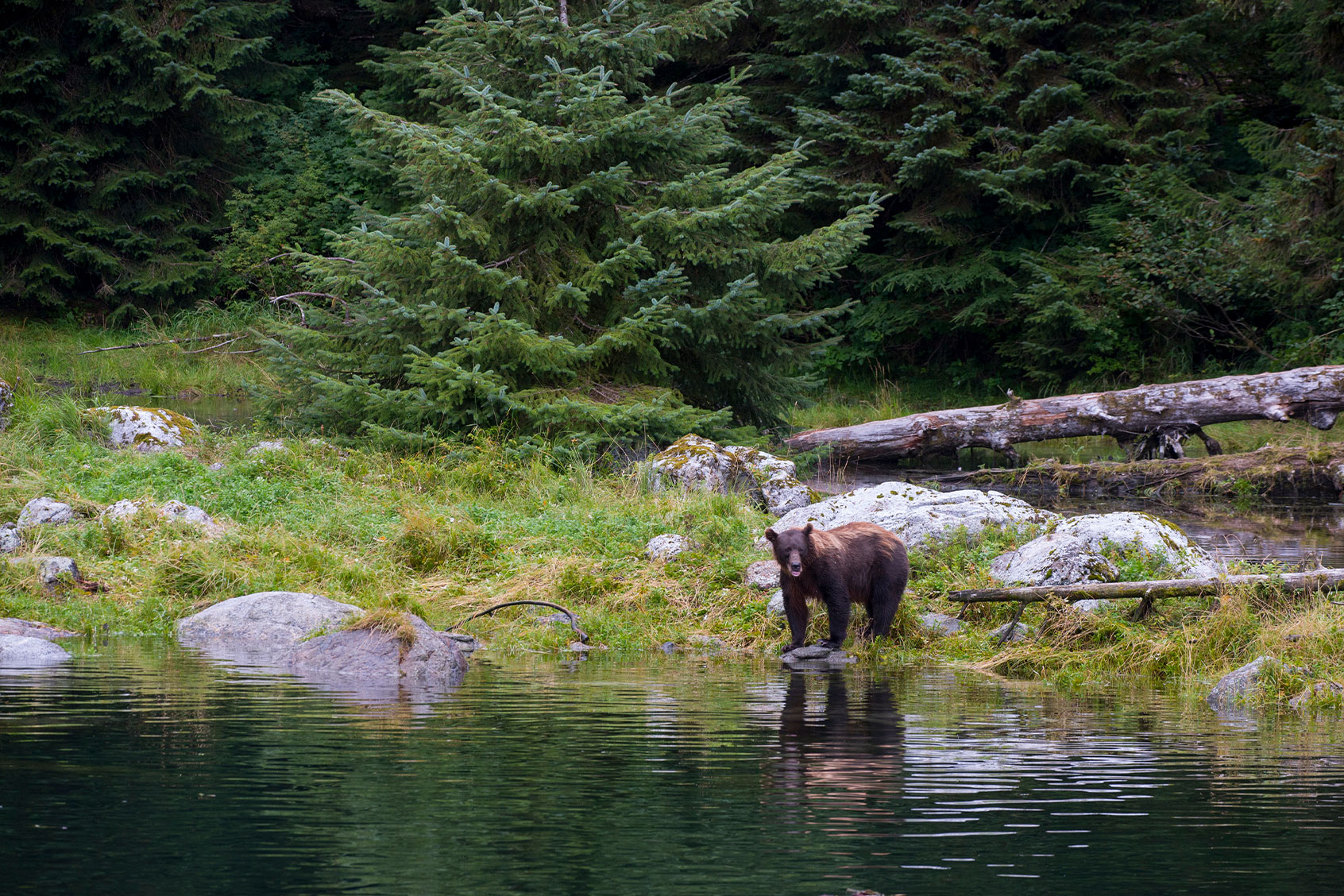Last week, the Biden administration restored protections for the world’s largest intact temperate rainforest, reversing a Trump-era initiative that opened up millions of acres to road-building and logging. The Tongass National Forest in Southeast Alaska covers 16.7 million acres — an area larger than West Virginia — and is home to old-growth Sitka spruce and cedars. Bald eagles swoop low over the forest’s dense canopy. Deer, moose, and black bears roam wild, and salmon swim in the forest’s streams.
Because the Tongass is a massive carbon sink, storing 8 percent of the total carbon in U.S. forests, it’s often called the “lungs of the country.” Locally, Alaskan Native tribes depend on the forest to hunt deer and moose, forage for medicines, and fish salmon. “It’s just very important that we keep [the forest] intact,” said Joel Jackson, president of the Organized Village of Kake, a federally recognized tribe located on the forest’s edge.
But the abundance of old-growth trees has long made the Tongass a target of the timber industry. A controversial Clinton-era policy called the Roadless Rule banned logging, roadbuilding, and other extractive industrial activity in the Tongass and other national forests. The rule has been weakened by legal challenges and the revisions of subsequent presidential administrations — some of them more friendly to logging interests. Most recently, the Trump administration repealed the Roadless Rule for more than 9 million acres of the Tongass.
Those protections were reinstated on Wednesday by the U.S. Department of Agriculture. The move was welcomed by environmental groups, conservationists, and Native Alaskan tribal communities.
“It’s incredibly important to have these sorts of common sense protections in place,” said Austin Williams, the Alaska director of law and policy for the nonprofit conservation group Trout Unlimited. The Roadless Rule is “central to making sure that these remote areas are managed in a way that is smart, that’s forward looking, and that’s responsive to the economic values in the region,” he added.
Even with the Roadless Rule firmly back in place, however, threats to the Tongass remain. An investigation by Grist in partnership with CoastAlaska and Earthrise Media last year found that vast swaths of the forest continue to be logged through the use of federally-approved land swaps. Congress can approve the exchange of federally-protected lands for private tracts. As a result, 88,000 acres have been transferred out of the Tongass National Forest to groups with logging interests since 2015. The analysis also found that 63 percent of the forest acreage razed between 2001 and 2014 had been transferred out of federal ownership. Restoring the Roadless Rule does little to prevent federal land swaps that can open up the Tongass to logging.
The Tongass is also reeling from the effects of a warming planet. Jackson said that in recent years the region has received very little rain and has experienced drought — an unusual phenomenon for a rainforest. When it does snow, it melts in a few days, and drought conditions have allowed the hemlock sawfly, which feeds on the foliage, to thrive.
“The cold usually kills the little insects that feed on a tree,” said Jackson. “It’s just too warm.”
Restoring Roadless Rule protections for the Tongass is part of a larger management strategy by the Biden administration for Southeast Alaska. In 2021, the Department of Agriculture announced a four-pronged plan to end large-scale logging in the Tongass and instead focus on forest restoration, recreation, and resilience. It also invests money in local communities to identify ways to conserve natural resources while increasing economic opportunities in the region.
The plan also prioritizes engaging in meaningful consultation with tribes — a marked departure from the practices under the Trump administration, according to Jackson. In previous years, administration officials would meet with tribal representatives, listen to their concerns, but not take their feedback into consideration.
“They were just here to check the box,” said Jackson, referencing the federal government’s obligation to consult with tribes. “But now that’s changed. They’re taking more time and trying to listen.”


